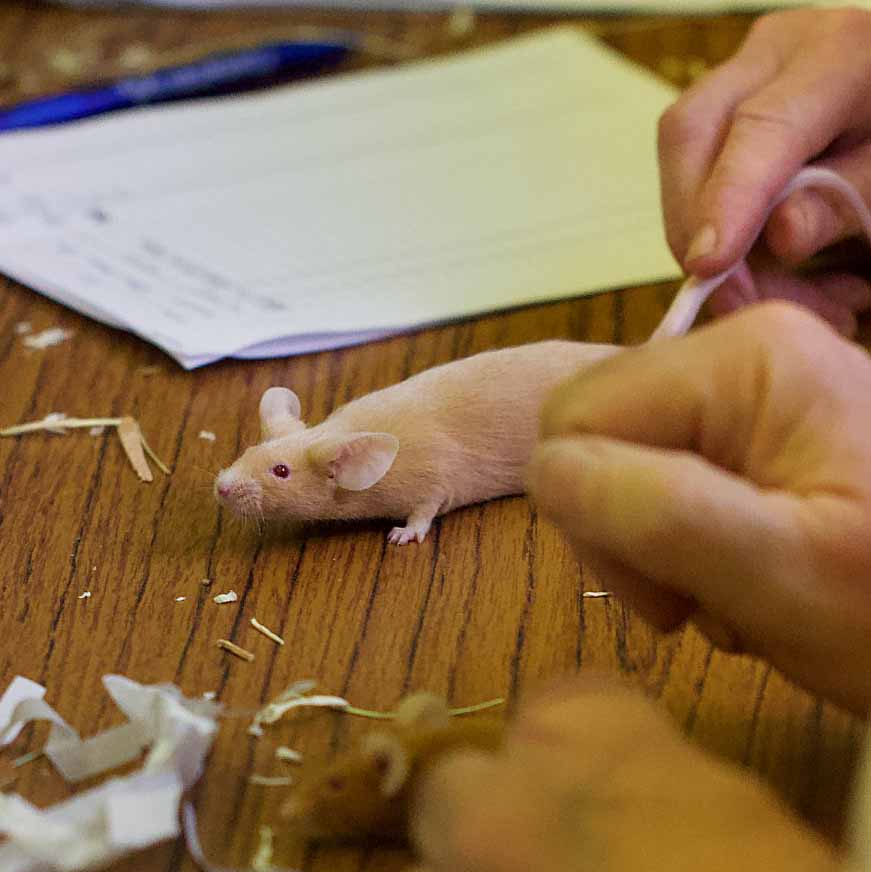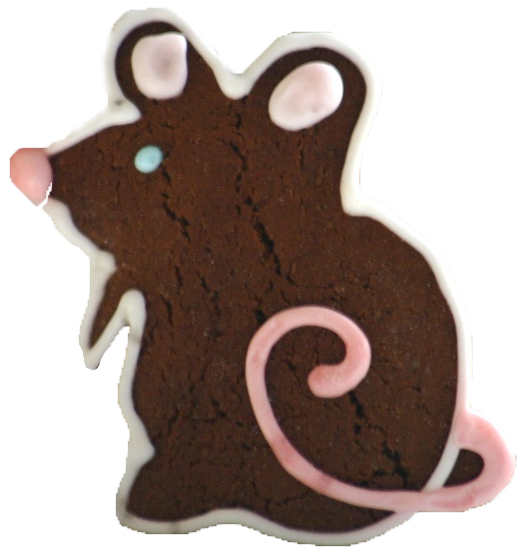Original article published in Fur And Feather 20 Dec 1957, by N.A.Deakin
I have chosen the Argente as the topic for discussion because in view of the big increase in any other variety classes at the countrywide shows in recent months, I would like to think it is the result of success on the show bench over the last few years which has inspired A.O.V. breeders in their efforts.
For the scientific minded fanciers the genetic make up of an Argente is AABBCCDDpp. Below I pen my impressions and experiences only.
Expressing, possibly, a slightly biased but nevertheless candid view, I consider the attractions of an Argente are second to none of all the varieties of fancy mice. For those readers yet to see this pretty variety, picture a mouse which appears at first sight to be a rich gold in colour with a sheen reminding one of shot silk as in a silk tie. Closer examination, however, will reveal that the shot silk effect is brought about by the intermingling of silver hairs with the golden ones, while the base of each hair, near the skin, is a rich deep blue in colour. This is quite clearly seen when the coat is parted or blown into. The belly colour, too, should be the same as the top colour as in a Self-variety.

Argente Mouse being judged
For exhibition purposes and to show itself off to maximum effect, the Argente has got to be A1. in coat and condition. The slightest moult shows up quite readily, but fortunately, it is a variety, which is not subject to a continued moult. Unfortunately, at present, as the variety is “new” to many of the younger judging panel there is a colour variation required, and in the main, the further South one exhibits the deeper the shade of fawn or gold is required.
In the breeding pen, however, these colour variations can be used to good advantage, and I would recommend the breeding of light to dark. The whole of my present stock has been line bred. The foundation was the doe, which was Best in Show at Bradford in 1956, and a buck, which I purchased from a young Southern fancier.
For the less experienced fanciers I would say that my mousery is a well ventilated light shed, and my breeding boxes are of simple but effective design, 21 in. x 12in. x 10in. high, with perforated zinc ventilation at the font and in the lid of the box. The 25 boxes are kept on shelves running along one end of the shed.
The maximum number of mice I have at any one time is approximately 40 only. The best of each litter is kept to replace existing breeding stock, and only then if it up to a high standard of perfection.
Cleanliness is of vital importance, and boxes should be thoroughly cleaned out once or twice weekly and dry pine sawdust, when obtainable, used liberally. Soft meadow hay and paper wool should be used for bedding.
One final word, and probably the most important to you. “Get out” of your hobby only what you are prepared to “give” it. I sincerely trust these last few paragraphs have been of assistance to someone to produce that “flier” we are always aiming for.
I don’t know anything of Mr Deakin’s career as an exhibitor. It may have been good, but it surprises me how often the most vociferous in telling ‘how it should be done’ have quite a poor record as exhibitors! –Ed
 We use cookies to ensure that we give you the best experience on our website. If you continue to use this site we will assume that you are happy with it.
We use cookies to ensure that we give you the best experience on our website. If you continue to use this site we will assume that you are happy with it.
0 Comments